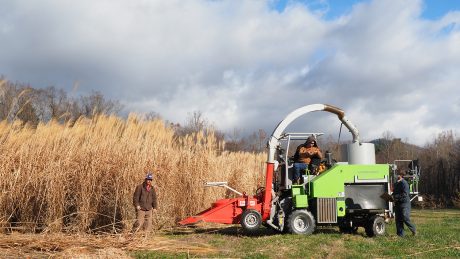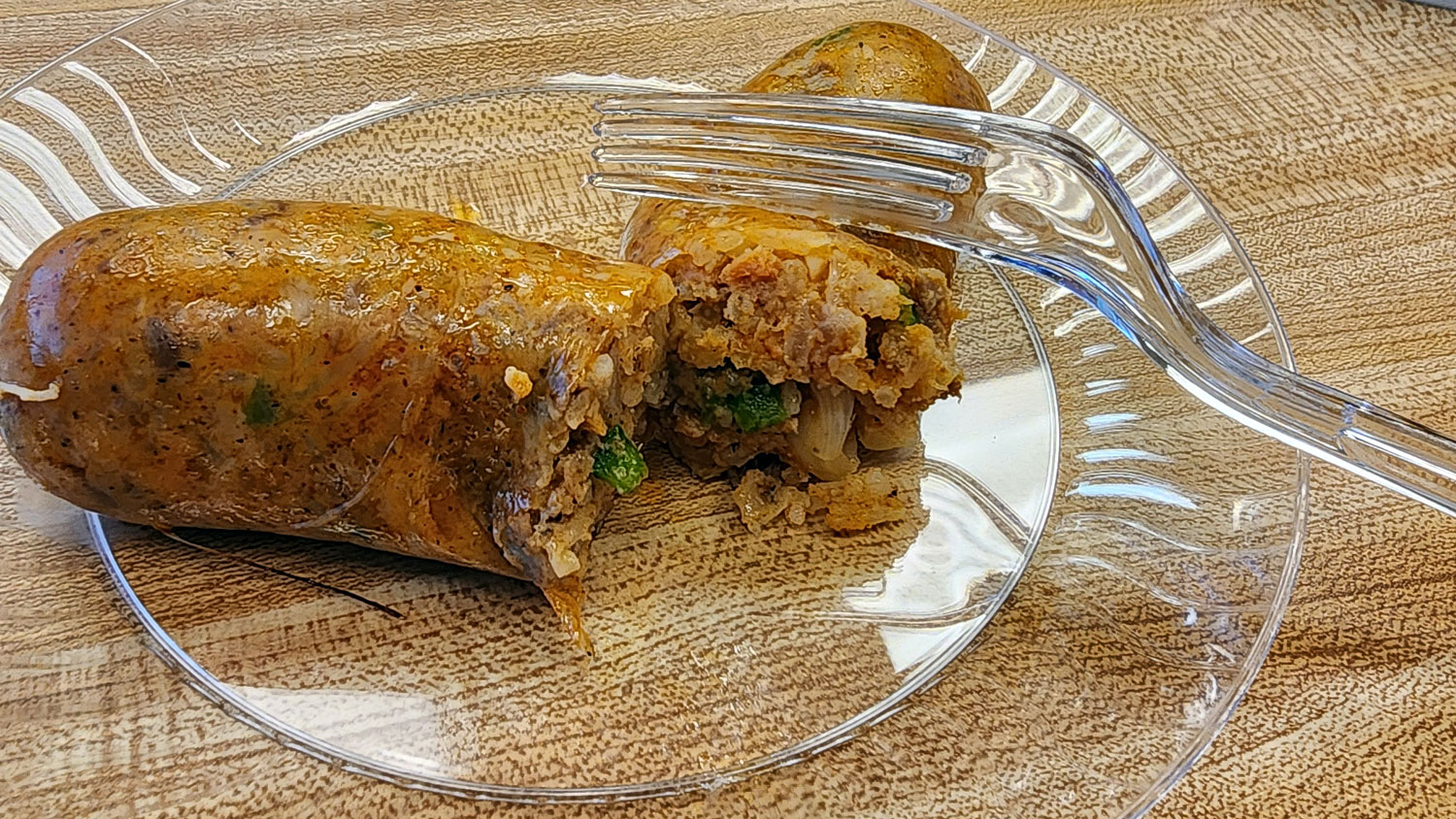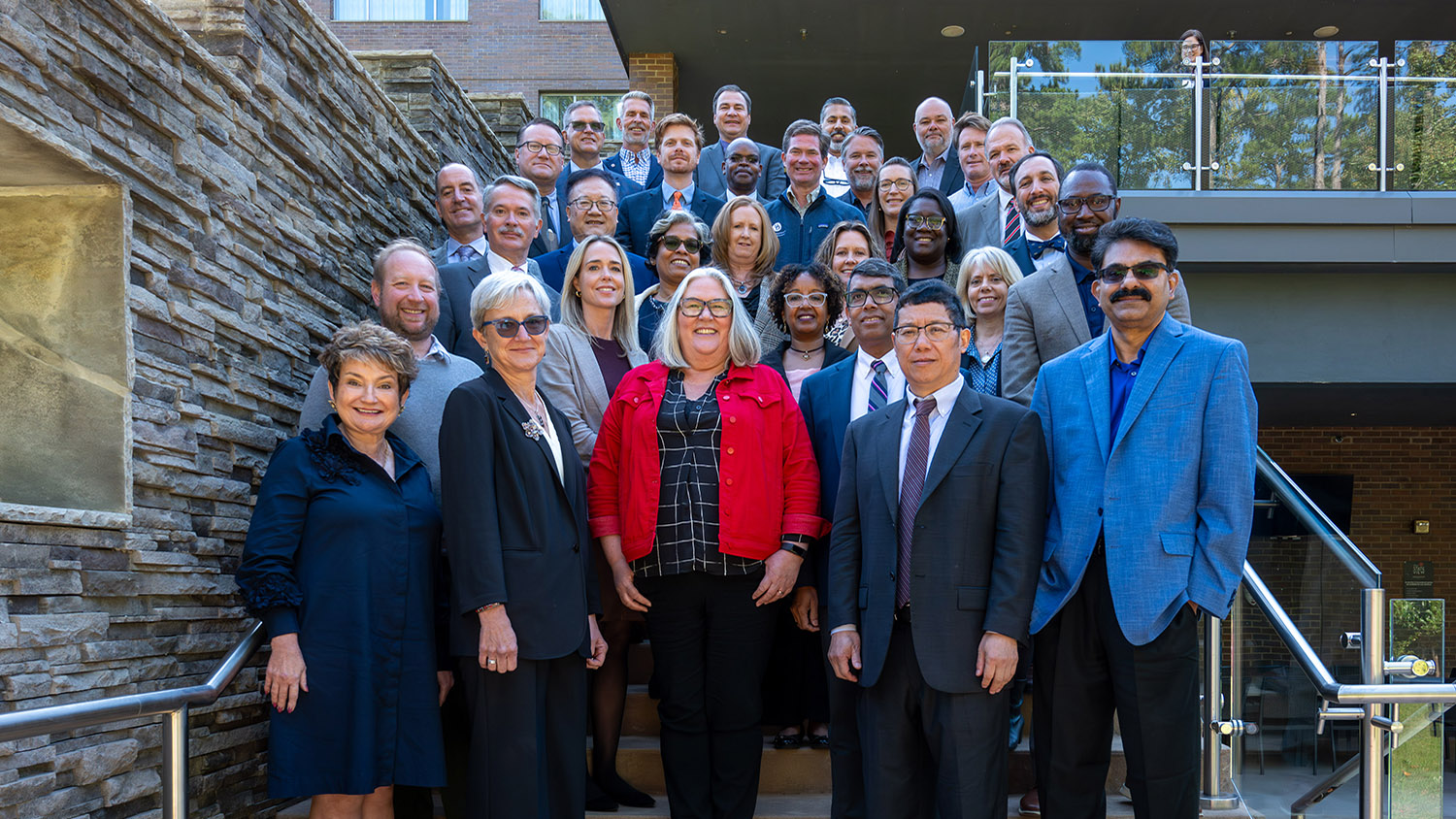Fueling the Future: Elephant Grass as Potential Biofuel Material (And More)

A common perennial grass may hold uncommon promise for research, agriculture and industry, and it may even fuel the future.
NC State University, in collaboration with an integrative, multidisciplinary team of research and business partners, is leading a five-year, $4.6 million U.S. Department of Energy grant focusing on miscanthus, also known as elephant grass, as biomass material for biofuels and bioproducts.
The team includes NC State faculty members in biological and agricultural engineering, crop and soil sciences, horticultural science, and plant and microbial biology, as well as researchers from Oak Ridge National Laboratory, Novozymes North America and Iogen Corp.
Working together, the researchers will evaluate how well different miscanthus hybrids perform in the Southeast as feedstocks for biofuels and bioproducts. Collaborators are looking at crop energy, supply-chain and environmental and economic questions and issues, both developmentally and within current commercial lines.
Professor Mari Chinn, an integrated bioenergy systems expert in NC State’s Department of Biological and Agricultural Engineering, is the lead investigator.
“If we can grow a bioenergy crop like miscanthus on soils that are technically not as suitable for our common commodities like corn and soybeans, cotton (and) tobacco, then that might be a better crop for us to grow in those spaces,” Chinn said. “And if there’s some added land-use or other ecological benefit, then there’s value there as well.”

Why Miscanthus?
Miscanthus is a high-yield energy crop that resembles bamboo. It grows quickly and produces a crop every year without re-planting. It’s also low-maintenance, easy to grow and typically doesn’t require pesticides or fertilizer after it’s established. Currently, its primary use in North Carolina is for poultry bedding.
To the project, NC State’s research team brings several advantages, including Professor Tom Ranney’s breeding program for advanced, high-biomass yielding miscanthus. The team also has experience managing significant acreage of standard commercial lines.
The project builds on this experience and examines productivity, environmental sustainability and adaptability of new energy-crop varieties across North Carolina’s mountains, Piedmont and coastal plain.
“As technologies emerge and develop, the competitiveness and profitability of different bioenergy systems and fuel stocks will continue to change,” Ranney said. “Therefore, it is also ideal to develop and produce transitional bioenergy crops that will have broad utility and value in diverse markets in both the near and long term.”
A Multidisciplinary Approach
To this point, the project proposes to exploit high-yielding characteristics of new varieties; capture relevant data to address gaps in knowledge about impact for local- and watershed-scale soil and water ecosystems; and generate field data to address barriers in harvest operations, handling and transportation that affect affordability of miscanthus as a feedstock in different regions of the country.
Part of sustainability, Chinn said, is looking at microorganisms associated with soils and soil-microbe-plant interactions underground to see if there are specific communities that miscanthus is either drawing in or that are assisting the crop and fixing different nutrient compounds. The researchers are also “heavily instrumenting” with newer fiber optic technologies to measure soil temperature, moisture and other properties to evaluate how the crop affects water movement throughout watersheds, she said.
And then there’s the supply chain: “Ultimately, you want to be able to not only grow a crop but deliver it at a cost that’s going to be reasonable for the end-user,” Chinn said. That means reasonable cost for the farmer and includes economics, logistics and composition of the biomass. Harvest and storage strategies, for example, can influence this.
“Typically, when you deal with these grasses, you might use more traditional farm equipment,” she said. “You might mow it and bale it, but then comes the question (when we’re in the Southeast), do we round-bale or square-bale? Large square balers aren’t as readily available here,” she said, “but is there added value in a large square bale when you talk about space and how much material you can get in that space for transportation purposes.”
“We started looking at chopped-harvest systems because there are fewer passes we need to make in a field,” she said. “However, when you chop the material, you’re changing the surface area and exposing compounds that we’re trying to preserve to potential spoilage. How, then, do you package chopped material for storage and effective transport?”

Partnering with Industry
Storage of chopped material brings its own set of questions, from storage performance differences among miscanthus varieties to changes that may affect conversion. That’s where Iogen and Novozymes come in, said Chinn, who is excited about the opportunity for feedback and building stronger relationships with the corporate collaborators.
Chinn said that some of the broader questions they are trying to address “are the materials we’re generating meeting specs for them and, in the overall model, which supply scenario gives us the most benefit, is most economical and can meet DOE metrics for dollars per ton delivered?”
For all the forward-thinking science and technology, the grant is also an opportunity to go back to the future – the entirety of data generated will be added to a public database. Chinn considers this a return to the university’s public-service roots.
“And I think it will be good,” she said, “because I think it’s the only way we’re going to do better in solving some of the issues we have with bioenergy and bio-based products.”
The Project Team
- Biological and Agricultural Engineering: Mari S. Chinn, Edward E. Godfrey III, Matthew B. Whitfield and Chadi Sayde
- Crop and Soil Sciences: Carl R. Crozier, Josh L. Heitman and Amy M. Johnson
- Horticultural Science: Thomas G. Ranney and Darren H. Touchell
- Plant and Microbial Biology: Amy M. Grunden; Erin G. Webb (Oak Ridge National Laboratory) and Mahmood Ebadian
Our research addresses grand challenges — and overcomes them.
[button]Learn more[/button]


